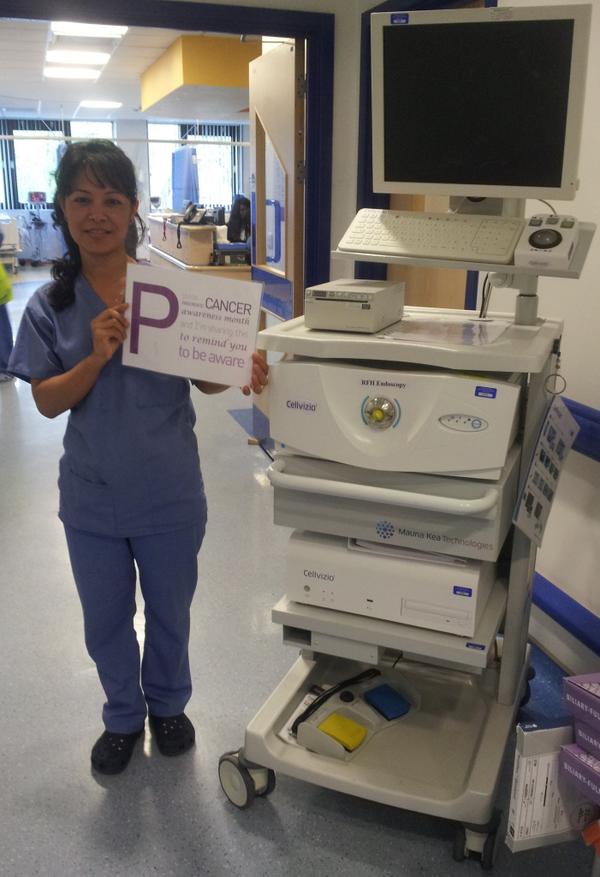Linda was diagnosed with a pancreatic cyst. Her consultant gastroenterologist, Dr. Stephen Pereira, performed a Cellvizio procedure and was able to rule out cancer immediately afterwards.
“It felt like my life was on hold,” says Linda Bartlett, a 41-year-old mother of two who found out she had a cyst on her pancreas in March 2014.
Linda lives in a town called Hertford in southern England where she cares for the elderly and spends her free time gardening and cross stitching. When she began to experience abdominal discomfort that led to trouble eating and weight loss, Linda went to her doctor.
At first she thought she might be dealing with inflammatory bowel disease, but a CT scan revealed a mass on her pancreas. A subsequent MRI confirmed it was a cyst. The next step would be to determine whether it was cancerous.
“I was shocked because I thought it was cancer,” recalls Linda. “My family has a history with cancer issues. My mother is prone to cysts and my husband has had cancer. It was a stressful time.”
Linda was referred to Dr. Stephen Pereira, a consultant gastroenterologist and hepatologist at University College London. Dr. Pereira is one of the first in the UK to use endomicroscopy with Cellvizio to examine pancreatic cysts and offered Linda an opportunity to participate in a clinical study.
Find out what you need to know about pancreatic cysts
“The ability to rapidly and accurately diagnose pancreatic cysts is important because it reduces wait time for the patient and allows doctors to make diagnoses with more confidence,” says Dr. Pereira. “Microscopic imaging with Cellvizio during standard endoscopies allows us to see and assess individual cells in real-time.”
Linda had no prior experience with endoscopies but was willing to participate in the study.
A benign pancreatic cyst can be distinguished from a potentially malignant one by the appearance of the cyst wall. After using Cellvizio to view Linda’s cyst wall for the first time, Dr. Pereira explained that it had a supervascular network of tiny vessels which is typical of a benign cyst. The procedure took less than 30 minutes and results were instantaneous.
“Another key advantage of this technology is that patients like Linda can avoid undergoing major preventative pancreatic surgery,” adds Dr. Pereira. “In this case we were able to rule out cancer and sent Linda home. Since this is a relatively new procedure, we do follow-up with patients in a standard way while we gain more experience with Cellvizio.”
“It gave me peace of mind,” says Linda. “There may be others who are not aware of the options available when diagnosed with a pancreatic cyst. Cellvizio Targeted Biopsy helped me return to my life and continue doing the things I love doing.”
Several published clinical trials show that endomicroscopy with Cellvizio provides an accurate description of a pancreatic cyst in about eight out of ten patients. In cases where the image is not conclusive, a traditional aspiration of fluid can still be taken. A clinical study is ongoing and is currently recruiting patients from the Royal Free Hospital and University College Hospital in London as well as Addenbrooke’s Hospital in Cambridge. Soon patients will also be able to join the study at Newcastle’s Freeman Hospital and Nottingham’s Queen’s Medical Centre.
Find a physician offering Cellvizio targeted Biopsy near you


